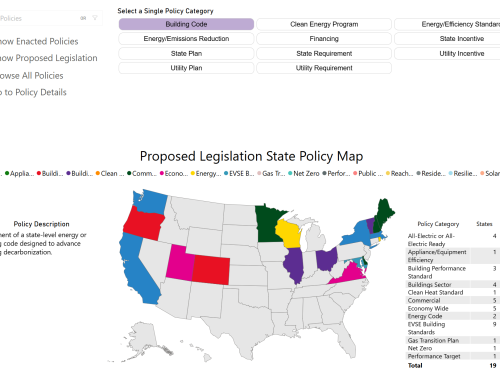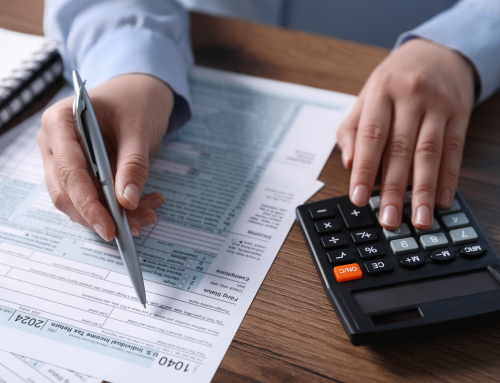
The historic $128.5 billion in federal funding for building decarbonization that has come through the Inflation Reduction Act (IRA) and Infrastructure Investment and Jobs Act (IIJA) represents an opportunity to make buildings healthier and more resilient while lowering energy bills. However, the United States needs a trained workforce to conduct the energy audits, install the heat pumps, and construct the all-electric buildings to translate this opportunity into action. Does the United States have enough workers to decarbonize the buildings sector? If not, how can the IRA and IIJA help?
Jobs across the clean energy economy are growing. In 2022, two million people worked in energy efficiency. Yet, 84 percent of energy efficiency businesses reported difficulties in finding trained workers. Current trends indicate there will continue to be shortages in skilled labor like electricians to meet US electrification goals. Case in point, a December 2022 report by Rewiring America found that the United States will need at least one million more electricians over the next decade to electrify 100 million homes.
Fortunately, IRA and IIJA are stepping in to fill the gap. At the federal level, up to $14 billion is available in workforce development-qualified funding for building decarbonization across IIJA ($2.64 billion), IRA ($8.94 billion), and annual appropriations to existing programs ($2.45 billion). The Department of Energy has dedicated at least $250 million of this sum in direct funding for workforce development related to building decarbonization. Plus, many of these programs are covered by the Biden Administration’s Justice40 initiative, so they are focused on recruiting from groups that are otherwise underrepresented in climate careers.
One example is the Training for Residential Energy Contractors program, also known as State-Based Home Energy Efficiency Contractor Training program, which will appropriate close to $200 million to states (through formula and competitive funding) to support trainings for residential energy efficiency and electrification contractors, test and certify contractors trained through state programs, and partner with nonprofits on program implementation.
Formula funding programs also hold additional money for workforce development. However, it is up to a state’s discretion whether projects qualify since workforce development is a loosely defined term. One example is the Weatherization Assistance Program (WAP), an energy efficiency program for low-income households that has received approximately $4.5 billion dollars from IIJA and annual appropriations since 2021. States can dedicate up to 20 percent of their WAP appropriation towards Training and Technical Assistance and Enhancement and Innovation grants, which can both be used for workforce development purposes.
Complementing this support for building a trained workforce are federal tax credits for energy efficiency projects. Through IRA tax credits like the Section 179D energy efficient commercial buildings deduction, project developers can earn additional credit—up to $5 per square foot for a building with 50% energy savings – for providing prevailing wages and hiring qualified apprentices from a registered apprenticeship program. The Section 45L new energy efficient home credit varies by program but provides up to $5,000 to projects that are providing prevailing wages.
Several states are also making innovative investments in workforce development. The Illinois Returning Residents Clean Jobs Training Program – a new $6 million program – will provide clean energy jobs training, education, and support services to formerly incarcerated individuals, such as connecting them with potential employers. The training will include employability skills and clean energy basics, then transition to job-specific training for solar PV installation or heating, ventilation, and air conditioning (HVAC) training with an energy efficiency focus.
Another notable state initiative is the Massachusetts Clean Energy Center’s Workforce Equity programming, which collectively offers over $12 million annually for climate job training serving underrepresented groups like low-income and environmental justice communities, Tribal Nations, and fossil fuel workers. Additional state workforce development programs are highlighted in the Atlas Building Hub’s Spotlight States dashboard.
Overall, progress on growing the workforce for buildings decarbonization and across all clean energy sectors is promising. The newly launched American Climate Corps – a partnership between the White House and federal agencies – will provide young people with training and opportunities to work in the clean economy across sectors, such as weatherization and conducting energy audits. But more work is needed to ensure organizations receiving grants are equipped to administer workforce development programs and secure long-term funding, since IRA and IIJA offer mostly one-time funding opportunities.
Power Forward Communities, a newly formed coalition of experienced housing, climate, and community investment groups, has the potential to help fill this gap. The coalition was awarded $2 billion from the National Clean Investment Fund to provide financing for housing decarbonization projects focused on low-income and disadvantaged communities. The group will utilize over 300 partners across 47 states to bring financing to local building decarbonization projects, creating demand for well-paying, skilled jobs in underinvested communities.
IRA and IIJA are laying a foundation for the building electrification workforce. Continuous dedicated funding and attention for workforce development initiatives can help meet this growing demand for skilled workers and ensure the $48 billion available in tax credits and rebates for energy efficiency is maximally utilized.



